Using essential oils for headaches is an ancient technique, nowadays known as aromatherapy. This alternative branch of medicine is based on a broad range of powerful plant extracts which can treat different diseases, removing the causes and symptoms. Avicenna, a Persian specialist and writer, was the one who first managed to obtain volatile oils through distillation. The name “aromatherapy” was first used in 1937 by Rene-Maurice Gattefosse in his book about essential oils.
Specialists assume that the power of essential oils usage as headache remedies is based on the influence of different flavors on the brain, especially the limbic system, with the help of the olfactory system. On the other hand, these oils have a pharmaceutical effect. There are three different ways to use aromatherapy: diffusion, inhalation or topical application. In the last case, you need to be careful not to apply directly to skin because of the potential irritating effect. Since the volatile oils are very potent extracts, they need to be diluted in a carrier oil, like almond, olive, sunflower, coconut, etc.
Essential Oils for Different Type of Headaches

Of course, essential oils can also treat headaches and migraines. If you know what is the cause of your problem, it is very easy to choose the right extract to do it yourself. Depending on the type of head pain, you may use them in different ways.
1. Sinus
If you experience a sinus headache, it means that you are facing an inflammation in the sinus cavities. It leads to a feeling of pressure at the base of the nose, on the forehead. In this case, aromatherapy specialists advise you to apply the essential oil topically on the skin to release the nasal passages and decrease tension. The recommended areas are top of the nose, chest, and temples.
2. Tension
Things are about the same in the case of a tension one. This pain may be due to tensed neck or shoulders muscles, and you will feel constant pain and pressure. You may apply the diluted essential oil directly on your forehead, temples, and wrists to soothe the symptoms.
3. Digestive Problems
When you encounter some serious digestive issues is possible to feel a terrible head pain. You may apply diluted oils on the temples, back of the neck and forehead.
4. Migraine
Migraine headaches are associated with severe pain and may last many days. It is an unpleasant situation because you may also experience increased sensitivity to light and even nausea. Migraines have multiple causes such as lack of sleep, stress, hormonal changes, stress or other serious conditions and diseases. They can also be triggered by constant overuse of conventional drugs. When you are facing a migraine, you can go for inhalation or topical application.
5. Stress
If anxiety or stress are the cause of your headache, then you should breathe deeply, place a few drops of essential oil on a cotton pad and inhale the fragrance. You will definitely feel better.
How to use Essential Oils For Headaches
Many essential oils can soothe the pain in case of a headache. Read the rest of the article to see what fragrances are useful and how to utilize them.
1. Lavender Essential Oil

Lavender can be found all over the world, and it is famous for its delicate scent as well as for the wonderful therapeutic properties. It is a mild oil, perhaps the only one that people may use without dilution. Studies have shown that two compounds of lavender, linalyl acetate, and linalool, affect the limbic system. These constituents are quickly absorbed into the skin and go directly to the central nervous system. The herb also keeps the serotonin levels in balance, decreasing the pain from the nervous system.
You should know that lavender essential oil is used to treat not only migraines and headaches, but it also acts on their causes, relieving stress and anxiety or even depression. The fragrant smell has the effect of a tonic on the nerves. People who suffer from insomnia (which may trigger a headache) can use it, and it is also perfect for athletes as it soothes joint and muscles pain.
Directions:
- When you want to feel better by releasing stress and muscle tension from head area, use a diffuser and add five drops of lavender essential oil.
- As we said, you may also apply undiluted oil on your temples, back of the neck and wrists to soothe the pain.
- For a complete relaxation, take a long bath and add ten-fifteen drops of essential oil to the bathtub. Breathe deeply to inhale the fragrance and benefit from the sedative effect. Your headache will be away by the time you get out of the bathroom.
2. Rosemary Essential Oil
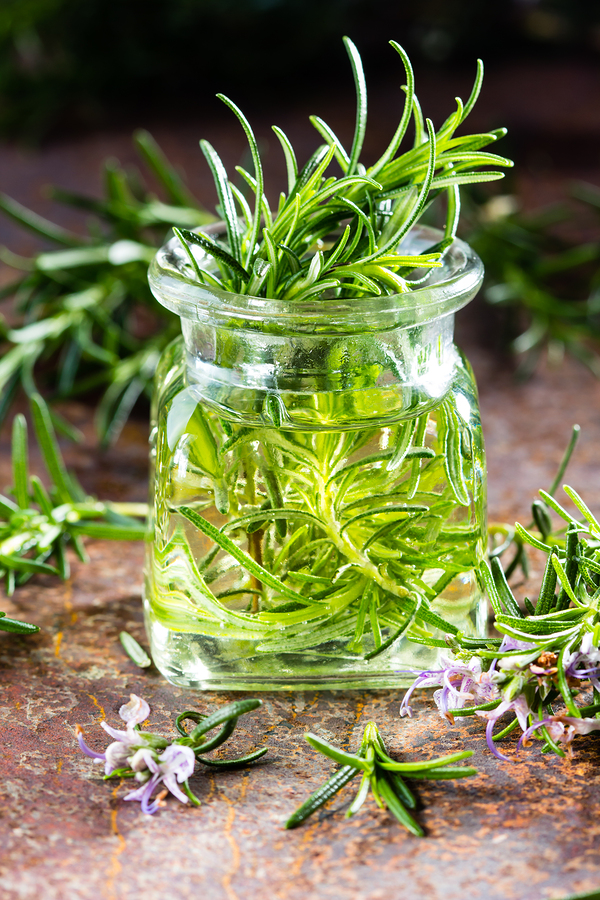
Long used in alternative medicine and also in cuisines all over the world, rosemary is a herb that can treat a lot of conditions. It can stimulate the mental activity, being an excellent tonic for nerves and brain. Rosemary also can be used as a home remedy in case of chronic fatigue, depression or lack of attention, all these being causes that lead to headaches or migraines. This herb has anti-inflammatory, stimulating and analgesic properties. Folk doctors also use it to improve digestion which can sometimes induce pain in the head.
Directions:
- Dilute two drops of rosemary oil in a teaspoon of coconut oil. You may even add a drop of peppermint oil.
- Slowly massage your forehead, temples, and back of the neck.
Caution: Don’t use rosemary oil in excess because it can have side effects, such as severe irritation. You should not use it orally unless you get this advice from a therapist. It can cause miscarriage in the case of pregnant women.
3. Chamomile Essential Oil
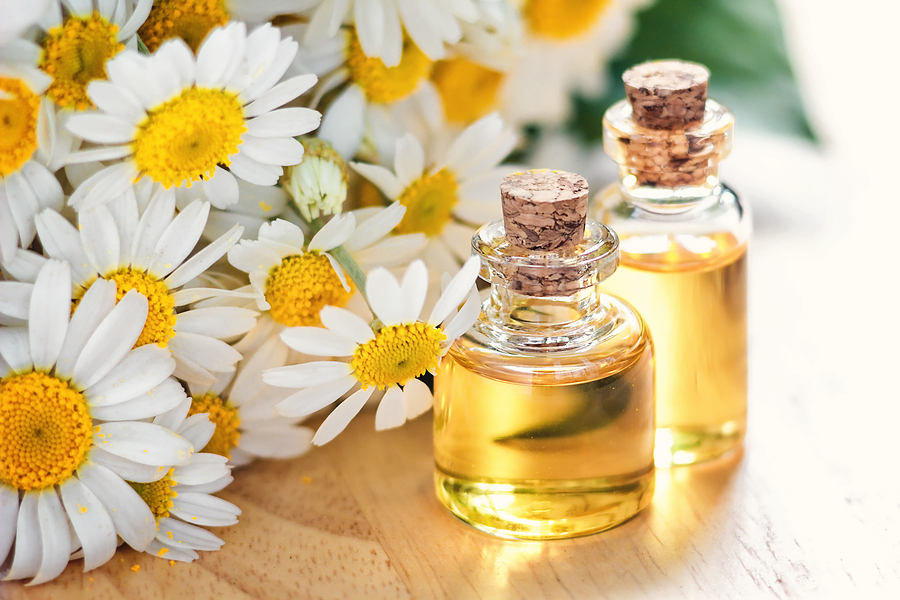
You may find two types of chamomile essential oil: German and Roman. Both have calming properties, and only the scent may differ. Roman Chamomile has a sweet smell which resembles apple while the German one smells more like straws. Both types of chamomile oils have many therapeutic properties with small differences. To treat headaches, German chamomile is preferred because it has analgesic, sedative, anti-spasmodic and vasoconstrictor effects.
It can treat any inflammation, and it will have a constriction effect over the enlarged blood vessels that can cause the pain.
Directions:
- Use it in a vaporizer by adding 4-5 drops.
- When diluting this oil, add 3-4 drops to a teaspoon of carrier oil and massage it into the temples, forehead and back of the neck.
Caution: This essential oil may have emmenagogue effects (stimulating the blood flow in the uterus or pelvic area) so you should not use it if you are pregnant.
4. Eucalyptus Essential Oil

Just like peppermint, eucalyptus acts as a decongestant, and it is effective especially in sinusitis. Its cooling effect releases the stress and pain and decreases any possible inflammation. Together with the antiviral, antibacterial and antimicrobial properties, eucalyptus essential oil has proven its ability of successfully treating headaches and migraines.
Directions:
- Since it is a potent extract, you should take caution when using it.
- First of all, never apply it to the skin undiluted.
- Always mix 2-3 drops of eucalyptus essential oil with a teaspoon of coconut or jojoba oil and massage the back of the neck, temples, forehead and chest to relieve any congestion or pain.
- If you prefer inhalation, add a few drops of eucalyptus essential oil in a large bowl with hot water, place a thick towel over your head and inhale the steam for at least ten minutes.
5. Tea Tree Oil

Many headaches have sinusitis as a primary cause. The inflammation of the sinuses leads to a constant sensation of pressure on the forehead and intense pain. While doctors usually recommend long-term treatments with decongestants, painkillers, anti-allergy drugs and even antibiotics, you may find tea tree oil useful to treat it better. Tea tree oil is also a powerful extract, and no one should ingest it as it contains many toxic compounds. Therefore, you should only use it diluted in water.
Directions:
- Place a few drops in a vaporizer and diffuse it to soothe the sinusitis symptoms and to stop it.
6. Cedarwood Essential Oil
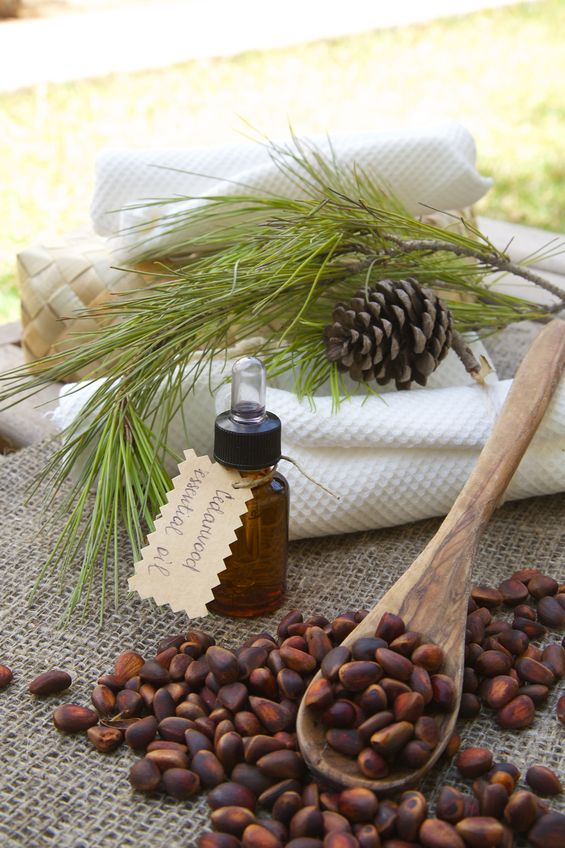
This oil is extracted from wood pieces of the cedar wood tree trough a distillation process. Studies have revealed a lot of beautiful properties of the essential oil such as tonic, antiseptic, diuretic, expectorant, sedative, astringent, antispasmodic and insecticidal. We hope that all these will convince you to try it. It is possible to experience a headache when you catch a cold, or you have a flu. Due to its decongestant and expectorant abilities, cedarwood essential oil will help you feel better. This extract can remove any mucus from your respiratory system by decreasing the congestion.
Directions:
- Mix 2 drops with a ½ teaspoon of carrier oil and gently massage your chest and neck to cure your headache.
- You may even add it to the upper lip and base of the nose to breathe easily.
7. Lemon Essential Oil
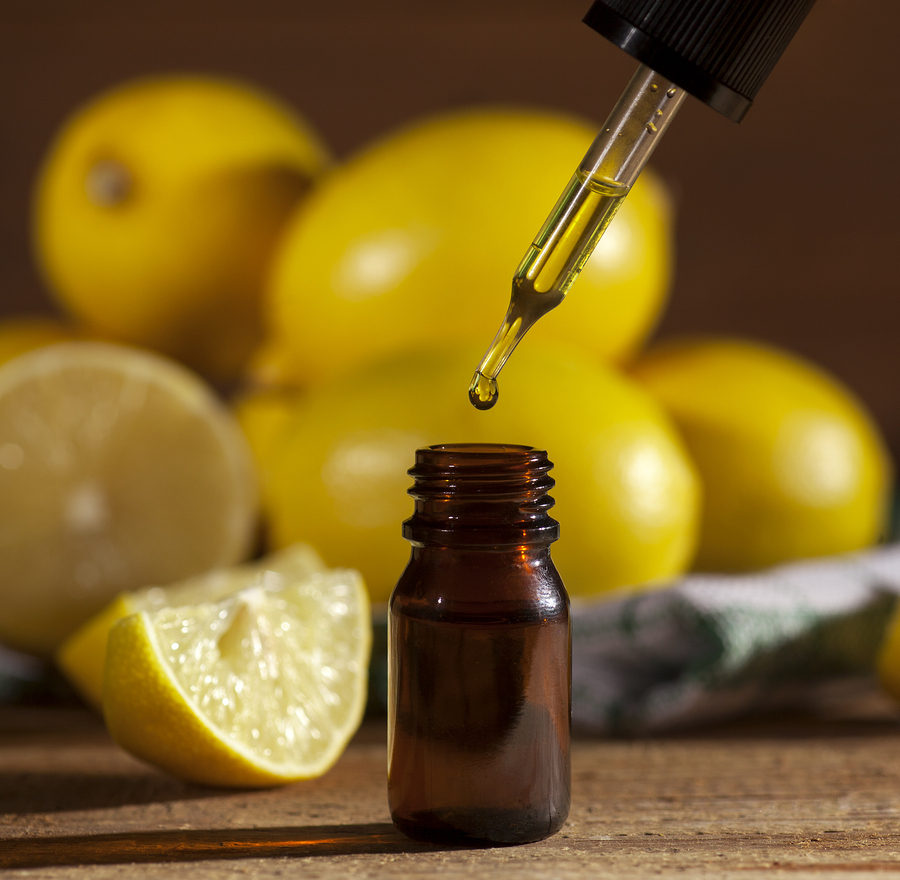
This oil have such a refreshing smell that only this fragrance can make you feel invigorated and will help with your headache. Furthermore, lemon essential oil is also antiseptic and has a fortifying action on the nervous system. It will combat fatigue and fight against depression. In the end, it is involved in decreasing congestion due to the inflammation of sinuses because of the antibacterial effect.
Directions:
- In the case of colds, sinusitis, flu fatigue, voice loss, lack of energy or stress (which are some causes of headaches), use it in a vaporizer.
- Or you may mix it with a carrier oil.Add 4-5 drops to one teaspoon of carrier oil and rub it into the forehead, temples, and back of the neck.
8. Sweet Orange Essential Oil
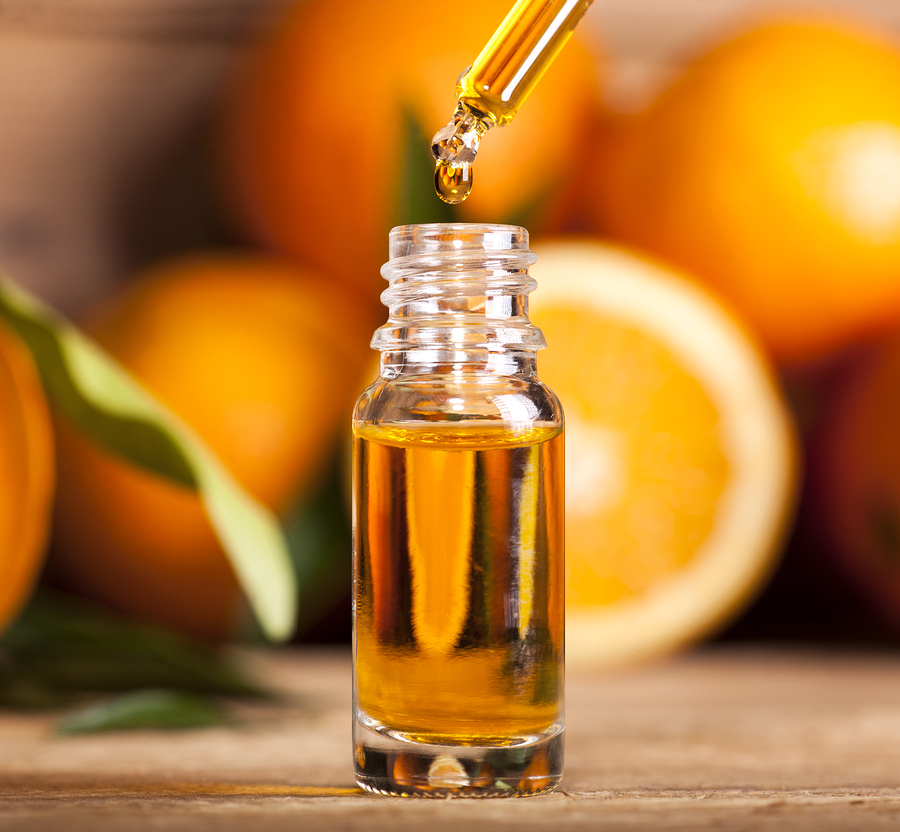
Extracted from the peel of sweet oranges, orange essential oil has a fresh and sweet smell, and it can make you feel well and bring back the good mood. It has a relaxing and tonic effect on the body and mind. Just like the other citrus oils, orange essential oil also has an antiseptic, anti-inflammatory, sedative and anti-depressant effect and will help you with your headache.
Directions:
- Add a few drops in a vaporizer to relieve unpleasant symptoms in case you are facing a cold and to reduce the constant pressure in the head due to the respiratory system congestion.
- Also, you can mix 3-4 drops in a teaspoon of coconut oil and gently massage your chest, forehead, sinuses, and temples with this mixture.
Orange essential oil brings a feeling of warmth and happiness. You may use it for children who have troubles in falling asleep at night.
9. Frankincense Essential Oil

Producers extract this oil from the resin of the frankincense tree, and it has a spicy smell combined with a wood scent. The fragrance resembles camphor a little bit. It also has a lot of therapeutic properties and effects such as astringent, sedative, antiseptic, tonic, expectorant and much more. Frankincense essential oil is especially useful for calming the mind and helping you breathe easier.
Many people use it when meditating, an activity which is very helpful in treating headaches. Frankincense oil reduces anxiety and stress, removing many possible causes of migraines. Due to its expectorant properties, it helps clear the respiratory tract in case of colds when a lot of mucus gets stuck in the throat and lungs.
Directions:
- Use a few drops in a vaporizer to treat coughs, bronchitis, and colds which can cause a headache.
- If you prefer a topical application, dilute 3-4 drops in a teaspoon of carrier oil and rub onto your temples, forehead, chest, and back of the neck.
- Another way of using frankincense essential oil for a headache is to add 5 drops to your bathtub and take a relaxing long bath.
10. Basil Essential Oil
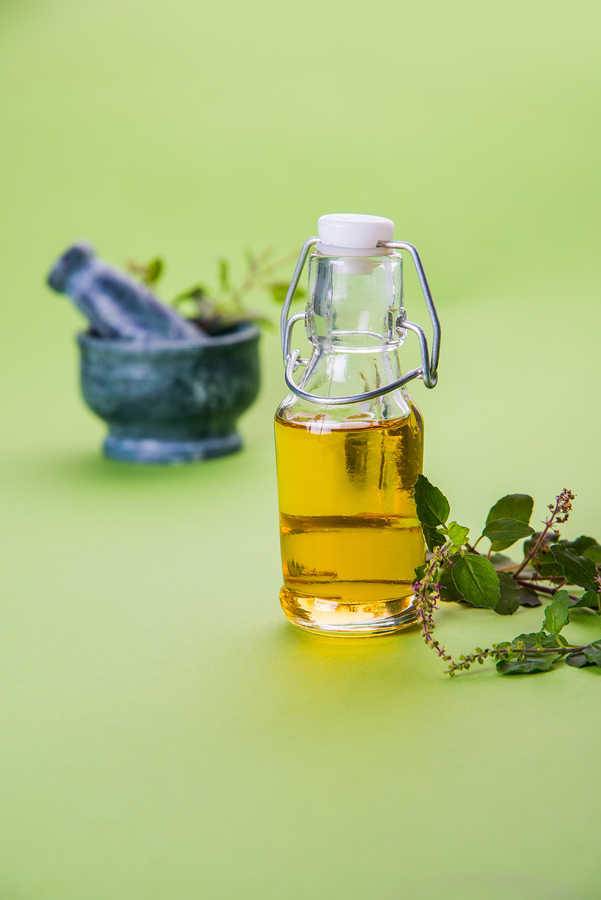
It presents analgesic, stimulant, digestive, expectorant, tonic, antidepressant and sudorific properties which will help alleviate any symptoms associated with a headache. Basil essential oil acts as a stimulant when used for curing it and migraines caused by stress or any other nervous problems. It relieves mental fatigue and brings back strength and clarity. Having an expectorant effect, it is efficient in clearing the respiratory tract and releasing the congestion in case of sinusitis.
Directions:
- Place a few drops in a vaporizer. The scent will clear your mind and calm your body.
- In the case of tension headaches, fill the bathtub with warm water and add five drops of basil oil. Soak until the water begins to cool and you feel better.
Caution: Do not use basil essential oil in excess because it can have a stupefying effect. If you are pregnant, you should not come into contact with this type of oil. Also keep it away from children under sixteen years old.
11. Helichrysum Essential Oil
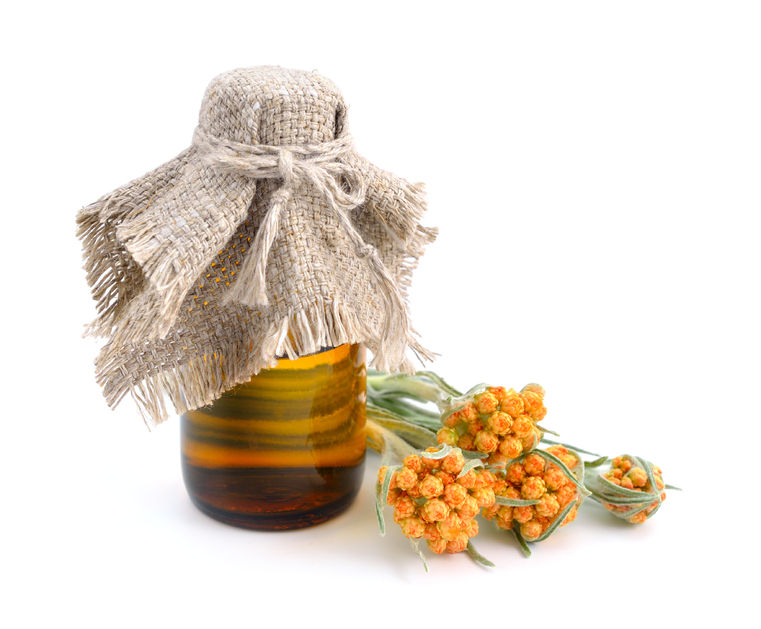
With a strong herbal smell, helichrysum essential oil combines many fragrances if you pay attention to them: it smells of fruits, tea and honey at the same time, but the combination is extremely pleasant. Also known as Immortelle, Helichrysum is recognized and used as a medicinal plant since Medieval times. The oil is extracted from the flower clusters through a steam distillation process.
Among the therapeutic effects of this oil you may find the following ones: anti-inflammatory, analgesic, anti-allergenic, expectorant, astringent and diuretic. Having that in mind, it becomes logical why it can decrease the pain and cure a headache.
Directions:
- You may place 4-5 drops in a vaporizer and inhale the scent. It will clear your respiratory tract as well as your mind.
- Or add 2-3 drops to a teaspoon of carrier oil and rub the mixture into the forehead, chest, and back of the neck.
Caution: Do not use helichrysum essential oil for children under 12 years old.
12. Mint Family Essential Oils
12.1. Peppermint
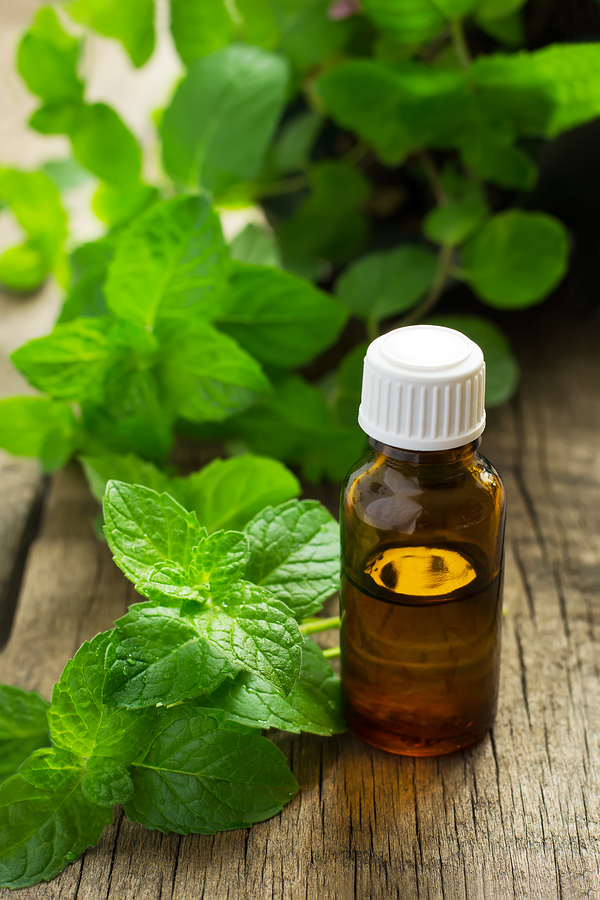
Peppermint can treat a range of ailments and conditions so broad that it would be almost impossible to talk about all of them in this article. The essential oil gets all the proprieties of the plant, so it receives a high amount of menthol which has a cooling effect on the sensitive nerves receptors and an anesthetic and analgesic effect. It also has digestive and antiseptic properties and stimulates the immune system. All these excellent characteristics make it perfect for relieving stress and pain, some of the causes of a headache. Chemotherapy patients may experience nausea and migraines. Peppermint essential oil can treat them better than other standard treatments based on over-the-counter drugs. The decongestant and expectorant properties help in the treatment of sinusitis, another condition which triggers headaches.
Directions:
- Dilute 2-3 drops of essential oil with one teaspoon of jojoba oil and massage your chest or use an inhaler to inhale the vapors. You may add one drop of each tea rosemary, tea tree, and eucalyptus.
- For tension or stress related pain, use the dilution and rub your wrists, forehead, temples and back of the neck.Use soft circular moves to relieve the pressure.
- Or just place a few drops on a cotton pad and inhale the aroma.
12.2. Spearmint
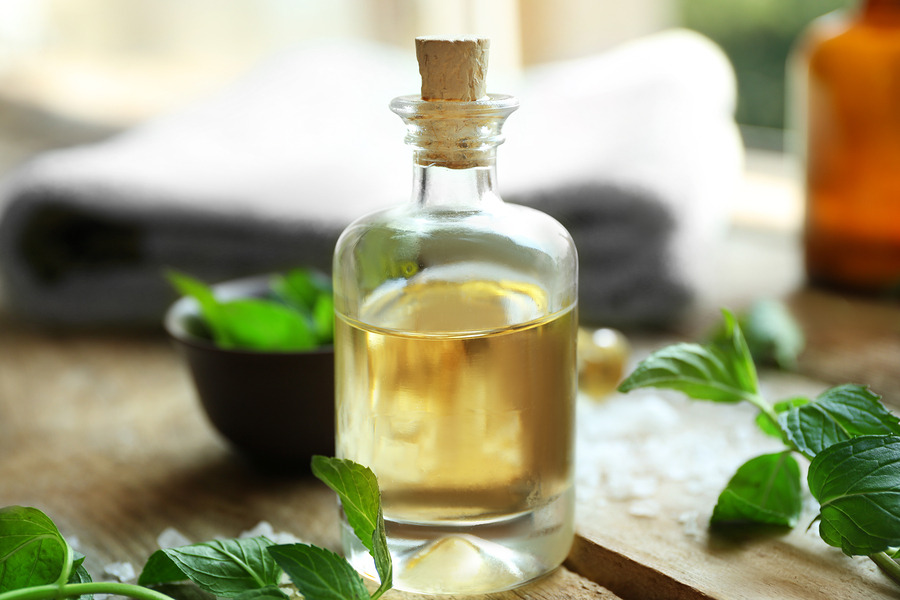
Even if spearmint essential oil is not as popular as the peppermint one, it is a milder extract and can be used for children. Even the smell is sweeter than the one of its relative. Considered non-irritant and non-toxic, spearmint essential oil can be utilized extensively for all ages. Spearmint essential oil has antiseptic, stimulant, antispasmodic, expectorant and restorative properties, making it suitable for treating headaches.
It has a smaller amount of menthol than peppermint. For this reason, you may also use it for your kids. Spearmint is good in chasing away the fatigue and releasing the stress as well as in clearing the nose and throat of any phlegm that might be stuck in there.
Directions:
- If you want to use vapor therapy, only add a few drops to a vaporizer and inhale the scent. A simpler method is to place some drops on a cotton pad and feel the fragrance.
- Another way is to dilute 2-3 drops in one teaspoon of coconut oil and gently massage your chest, throat, forehead, and temples.
Essential oils are great to treat this kind of pain, and you may choose the fragrance you prefer. If you try aromatherapy for two weeks and you don’t feel any improvement with your headache or a migraine, it is time to consult a doctor because the problem may be more severe.
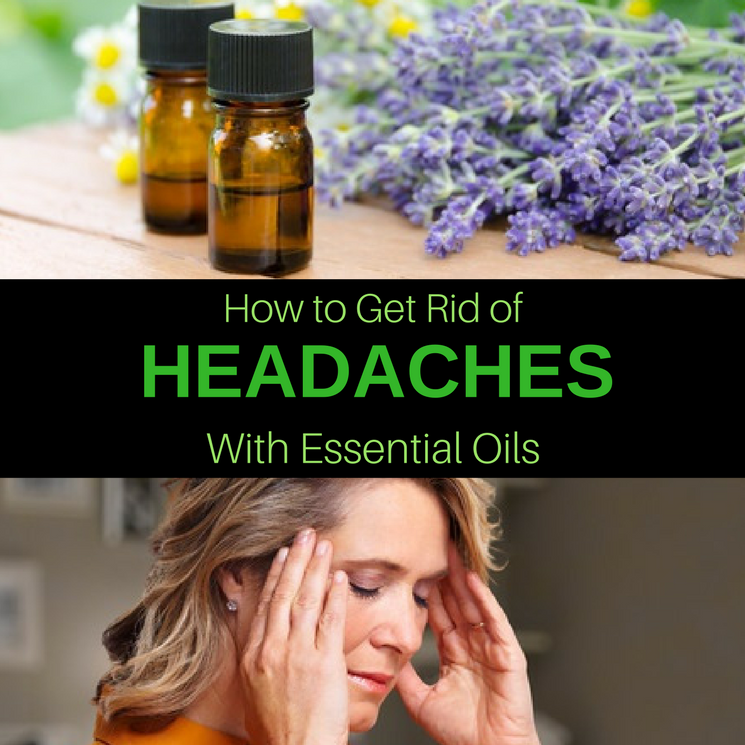

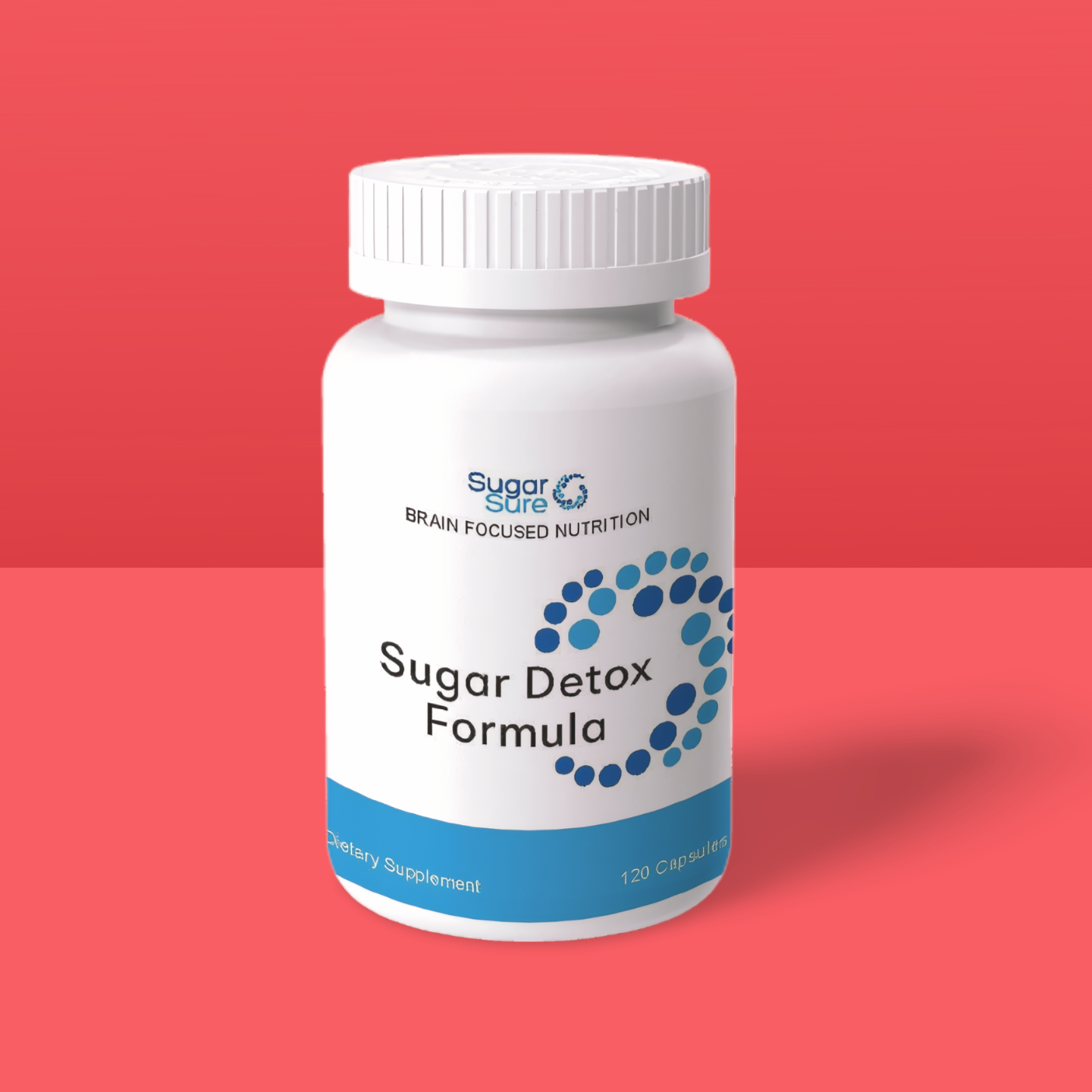
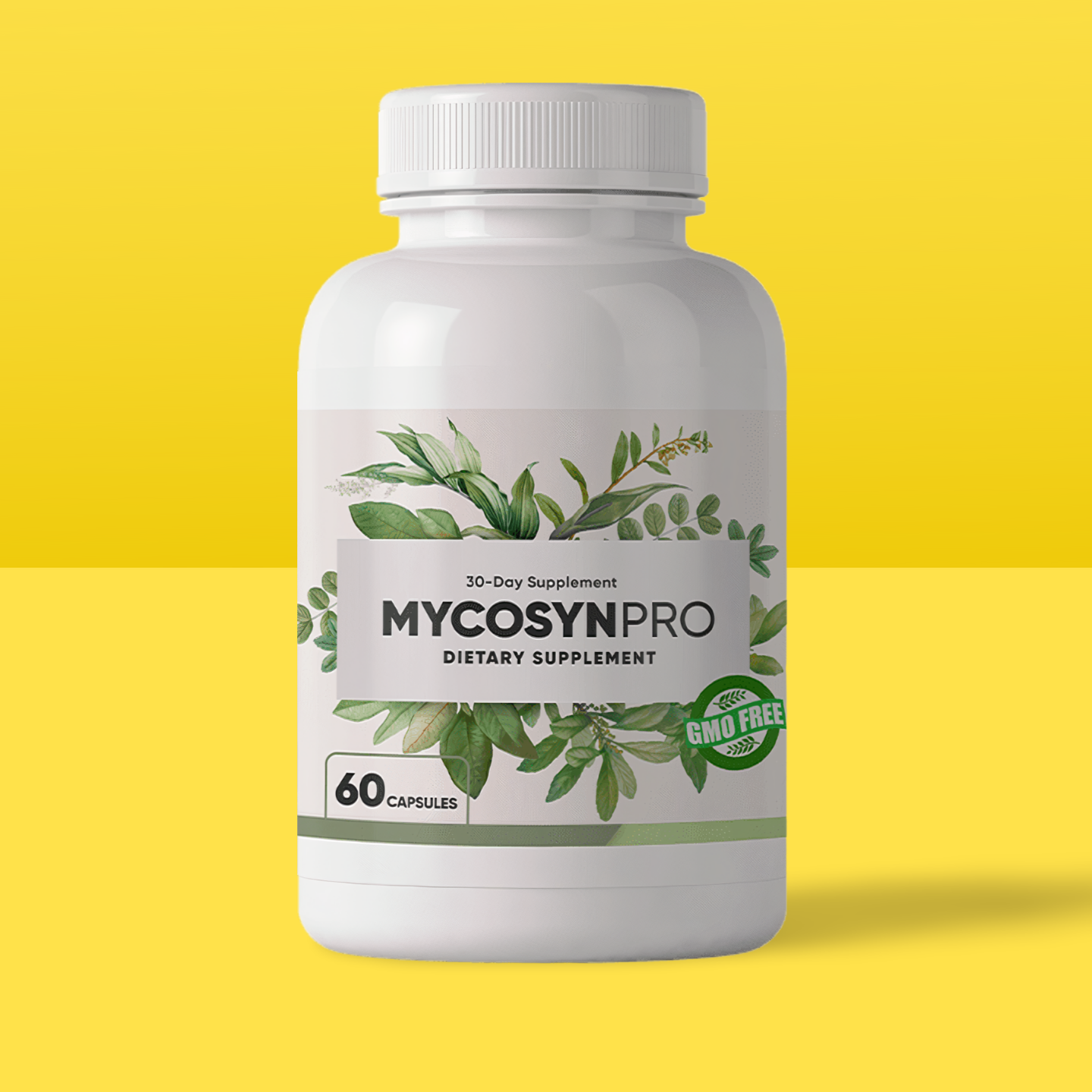
Leave a Reply